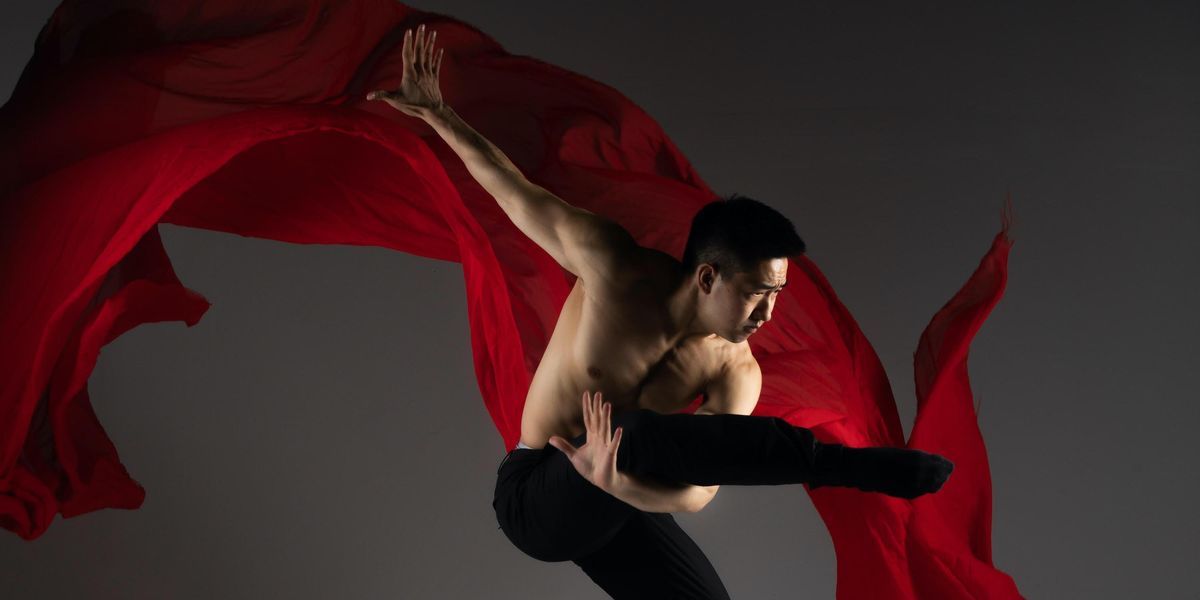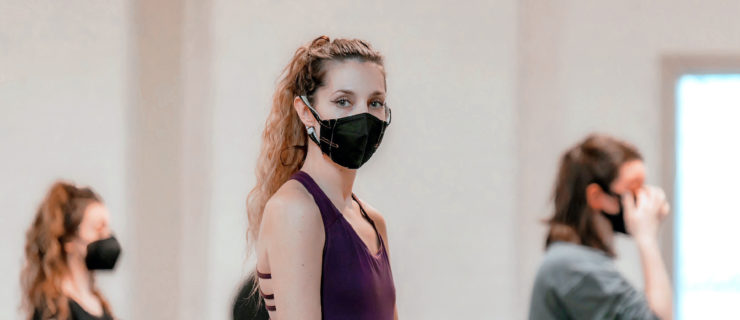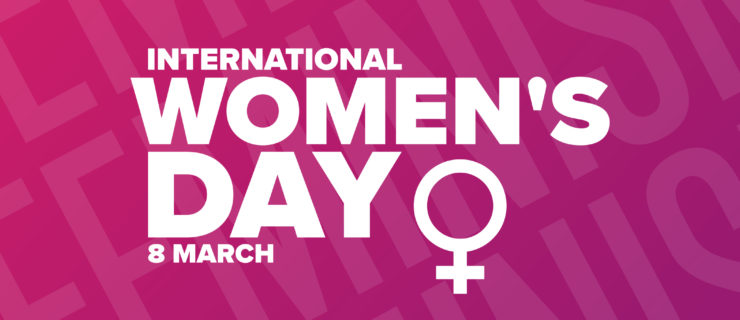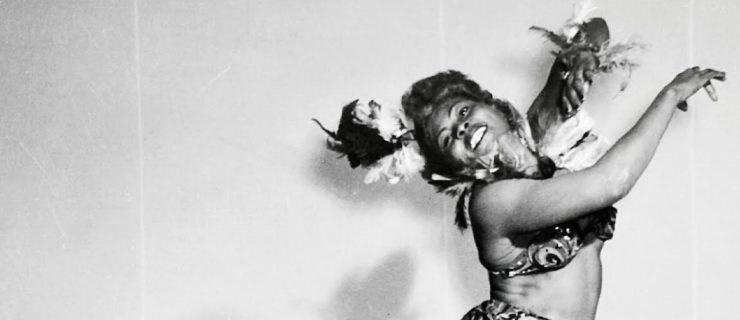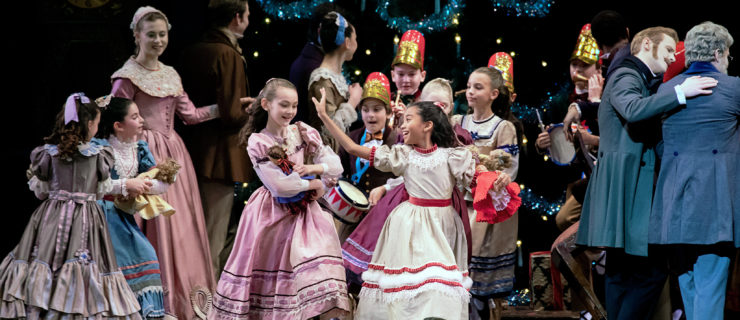6 AAPI Dancers Share Their Stories
Last year, anti-Asian hate crimes increased by 150 percent in many of America’s largest cities. And last month, a mass shooting in the Atlanta area took the lives of eight people, six of them Asian women. Since then, the attacks on Asian Americans and Pacific Islanders have continued, sparking a national movement to stop AAPI hate.
In light of this, Dance Spirit wanted to help amplify the voices of AAPI dancers. We asked six to share their thoughts about anti-Asian racism and how it appears in the dance world. Here’s what they had to say.
Alex Wong
Dance Spirit: How would you describe your Asian-American identity?
Alex Wong: I’m Chinese. My parents are from Hong Kong, and they moved to Canada for their final year of high school or first year of college. I grew up in Canada. Cantonese was technically my first language, but now it’s quite rusty, though I can still speak conversationally. I’d say I grew up with Chinese values in Western culture. I have a good understanding of both.
DS: You recently posted a video about a group that threw rocks at your head while you were biking in New York City. What motivated you to speak up about your experience?
AW: When it happened, I was not physically hurt and not really emotionally hurt. I was just annoyed at the situation, so I made a video diary and then let it go. The shooting in Atlanta made me think about it again. I couldn’t say for sure if it was a targeted Asian crime against me, but I felt like, subconsciously, it had to be. They probably threw rocks because of the way I looked. They knew I wouldn’t fight back or make a stink about it.
It’s very ingrained within us Asian Americans to not make a big deal. I’m used to keeping my head low, but here, I thought I should speak up. Even if it didn’t hurt me, I could possibly prevent this from happening to someone else. What if it had been my mom or my grandma, or an older person? Or even someone less physically capable who would’ve lost balance on their bike? I wanted to use my platform to let people know that these things are happening and it’s not OK.
DS: How does the dance world fit into conversations about anti-Asian racism?
AW: When I was about 15, I was at a crossroads in my career: I could pursue the commercial side of dance—TV, film, Broadway and things like that—or I could pursue ballet. Even though my parents would have supported that, the idea of stability was still important. I knew that obviously no one was going to cast an Asian in West Side Story, and I wasn’t used to seeing any Asians on TV. The commercial route just wasn’t realistic. I pursued ballet for seven years. Then I started seeing more Asians on TV, and that’s when I auditioned for “So You Think You Can Dance.” After that, I went into the commercial industry. I’ve seen improvement within my career. It’s gone from “You can’t have more than one” to recently: I’ve been on shoots where there are so many Asians in the cast. I did a Mastercard commercial last year, and I think there were four of us in a very early shot. We were all like “Go Asians!” because it was more than what you would normally see with just the one token. It’s nice when there are more, but it’s still rare enough that I notice it when it happens.
DS: What can dancers do to support the movement to stop AAPI hate?
AW: Use your own platform to spread good, happiness, joy—things like that. Being yourself is enough.
Christine Flores
Dance Spirit: How would you describe your Asian-American identity?
Christine Flores: I’m actually Asian-Canadian. I’m half Chinese, half Filipino, and Trini. My mom was born in Trinidad, and, growing up, that was a huge part of our culture. Growing up in Canada, we were taught to embrace everyone’s culture. It’s not that we didn’t see ethnicity, but we didn’t try to divide people into white, Black or Asian. For example, I didn’t use the term “white,” but would say they’re Italian or European. I’m very grateful for having been taught to celebrate people’s differences.
DS: What would you like people to know about the rise in anti-Asian violence and racism?
CF: Being in New York City, I have never felt the stress that I do recently. It feels really unsafe in places where I would usually feel at home. The attacks are happening in places that are busy, areas that I’m in all the time. I usually wear my headphones walking or on the subway, but now I won’t. I don’t want to travel alone. I try not to draw attention to myself, which also sucks. In a time when women are trying to be empowered, I feel suppressed. I don’t want to be seen because something could happen to me.
DS: How does the dance world fit into conversations about anti-Asian racism?
CF: I’m usually one of the few Asians in a company, and I feel torn. There’s the idea of tokenism, which makes it hard to tell why you’re being chosen. In some companies, I feel like I’m filling a diversity quota. In others, I feel like I’m hired because of my talent. It’s hard to know if people are being authentic. In the hip-hop community, I see a lot of diversity. But not as much in the contemporary scene, where there’s some elitism that doesn’t always highlight Asians, or if they are highlighted, they are light-skinned or look white. Not everyone may agree with this, but it does make me question if these companies are being truly inclusive—it’s just a question.
I also have a positive experience, though. When I was dancing for Company XIV, someone came up to me after the show and said she never thought there’d be a day when she’d see an Asian Sugar Plum Fairy. She said it was so great to see an Asian woman up there in a lead role, because we’re always the supporting role. I realized that was true, and it touched my heart. I thought, “Wow, I’m standing up for Asian women. Woo-hoo!” It felt so empowering, and representation is so important.
DS: What can dancers do to support the movement to stop AAPI hate?
CF: As artists, it’s our place to make people feel uncomfortable. We need to keep having these uncomfortable conversations. Even just making an effort to learn, to read, to listen is a big step. Look inside and question why you feel a certain way or why something makes you uncomfortable. Even check in with your friends and ask them if something you said was wrong or insensitive. It’s hard, but being brave enough to ask the question and then being responsible for the outcome is a huge step.
Ellen Kim
Dance Spirit: How would you describe your Asian-American identity?
Ellen Kim: I am Korean-American. Part of my culture is to respect your elders. We don’t speak loudly to our elders, and we honor the hierarchy of our family. One thing about Korean culture that I love is nunchi, which means the ability to read the room, people’s energy, their feelings. It’s the awareness of self and others. Another big thing is food. I believe our love language is to feed other people.
DS: What would you like people to know about the rise in anti-Asian violence and racism?
EK: Stopping AAPI hate has always been a thing for me, not just right now. I’m from San Francisco, which is very diverse, but I did grow up seeing Asians hating on Asians, others hating on Asians, and vice versa. I believe I was one of the first female, Asian-American dancers to start on YouTube, back in 2008. I’m so thankful I’ve been able to travel the world teaching dance, but I’ve also seen the world’s view of me. In Europe, I was called racial slurs, and when I corrected them, they said being American is worse. Even in Korea, since I don’t know the language very well, I always get looked down on. We need to stop hate in our community and around the world.
DS: How does the dance world fit into conversations about anti-Asian racism?
EK: Right now, it’s a blessing to see Minari get recognized by the Oscars and to see so many Asian Americans on television. But years ago, when I was acting as well as dancing, I encountered so many casting directors asking for an Asian accent. I was naïve at first and excited to enter the industry, but it happened consistently. As I learned more about acting, I realized that, unless the character was a foreigner, there was no need for that. There is one audition I remember in particular. They asked for an accent, and I actually did it. I felt used and gross. I was fed up, and that inspired an idea for a dance video, which became “Safe.” I used my experience and channeled it into dance.
DS: What can dancers do to support the movement to stop AAPI hate?
EK: I hope that we can take the time to reevaluate, educate ourselves and communicate with others; to actively listen more empathetically, share our experiences, and support and build each other up, even when we are different; to give grace to one another and truly treat each other the way we want to be treated. I’m not one to tell anyone what to do, so I always ask myself, “What or how can I do better? Is there someone I need to check on? How is my mental state?” Having a daughter taught me to have patience and speak with love and understanding.
Hannahlei Cabanilla
Dance Spirit: How would you describe your Asian-American identity?
Hannahlei Cabanilla: I’m Filipino-American. My parents grew up in the Philippines and moved over here, so I’m first-generation American. I live in Orange County, California, in a predominantly white area. I was always the minority, so I feel like I became numb to the racism I experienced. I didn’t realize what a problem it was because where I grew up was mostly white people who didn’t necessarily think these issues were a problem. Now I’m very open to what is happening, and it’s crazy that no one has spoken up about it before.
DS: What would you like people to know about the rise in anti-Asian violence and racism?
HC: Growing up, I was raised to just brush off the comments—the racial slurs and jokes. I never realized how harmful and offensive they were because it was so normalized in my life. Now, as I am older, I realize the problem and know it is not OK.
DS: How does the dance world fit into conversations about anti-Asian racism?
HC: I’m often the only Asian on a dance job. I never realized that was a problem, but now that I’m aware of tokenization, I wonder if I’m chosen because they need an Asian. I also sometimes don’t get auditions because of my race, and that’s not fair either. I’ve been to auditions where we’re asked to separate ourselves into groups based off how we look, and they pick from each group. I don’t think that should be normal. It’s hard because I’ll do anything for dance, and that’s anyone in the industry. We should be equal, no matter our size, race, ethnicity and so on. The dance industry is all about our look, but at the end of the day, it should be about our talent.
DS
: What can dancers do to support the movement to stop AAPI hate?
HC: Speak up about it. I’m so glad people are actually speaking up. I recognize I was ignorant to it growing up, and now I’m noticing more. And since other people are speaking up, I feel like I need to speak up as well. Spreading this awareness will help change other people’s mindsets.
Lex Ishimoto
Dance Spirit: How would you describe your Asian-American identity?
Lex Ishimoto: Coming from Asian descent and growing up in an Asian household, working hard is something that is ingrained. There are no shortcuts. I’m very proud to have that on my shoulders because that’s what has made me into who I am today.
DS: What would you like people to know about the rise in anti-Asian violence and racism?
LI: To see that there are people out there who are making us take a step backwards is truly disappointing. There are things I have to think about now that I shouldn’t have to think about. I’m always checking my back and am concerned for my friends and family. That’s not something I should have to worry about on a daily basis.
DS: How does the dance world fit into conversations about anti-Asian racism?
LI: When I was a kid watching “So You Think You Can Dance,” there weren’t too many Asian people to watch. I was seeing so many Asian Olympian ice skaters, and I wanted to see that in dance. I thought, “What if I were the first Asian American to win ‘So You Think You Can Dance?'” I was striving for that dream, but it died down as I got older. Then somehow it happened. Winning was very calming and comforting because I thought, “It’s possible. We did it!” Then it was a three-peat of Asian Americans winning. It was important to me to have that representation, but now I feel like that wasn’t enough, and I wonder what more we need to do.
DS: What can dancers do to support the movement to stop AAPI hate?
LI: There’s been so much support from the dance community and public. I really appreciate that. But there are times when we have to swallow the information before we act. Sometimes a post isn’t enough, and it’s not even necessary. It’s sad to see when issues like anti-Asian racism and Black Lives Matter become more about sharing the hashtag than the actual movement. Gather information, educate yourself, and change as a person first. I wish I could say, “This is the way to solve it.” But honestly, I have no idea. With the shooting and so many incidents afterwards, it’s been exhausting. What more do we have to do for people to understand what we’re doing and see that we belong here? The stereotype is that Asians are quiet most of the time. So when we do raise our voices, it’s because it matters.
It is a big moment for me to keep going and to keep the passion alive. It is fueling me to do better. I’m going full force. Whatever I’ve been doing to help my community and to help myself, even selfishly, I’m going to do more of it. It’s not going to stop here.
Sean Lew
Dance Spirit: How would you describe your Asian-American identity?
Sean Lew: I’m Chinese, Japanese and Mongolian. People are always a little bit shocked, maybe because they just see me as Asian. Those three parts of the world are so different from each other, yet they’re all part of me. It’s not like I’m Chinese one day and Japanese another. Not understanding the different cultures builds stereotypes, which contribute to the idea that Asians don’t belong in America.
DS: What would you like people to know about the rise in anti-Asian violence and racism?
SL: Hate on Asians, and racism in general, is a silent virus. People don’t realize it until they have to. But we shouldn’t have to wait for it to cost people’s lives to start having the conversations. It’s not just about stopping Asian hate. Just sharing the hashtag is almost like joining a dance class last minute and pretending to know the moves. It’s not going to change the conversation or open people’s eyes. It’s not about making people feel bad about us. It’s not about who has it worse. We’re trying to change the way you see us as Asians in America to let us just be Americans.
DS: How does the dance world fit into conversations about anti-Asian racism?
SL: There have been a few little moments that never sat well with me. Asians have this stereotype of being timid and shy, and maybe that’s because if you look back at our representation in history, we’re not shown as strong, which I guess gives people an excuse to see every Asian person in that same way. There was someone who tried to speak their own version of Chinese to me when they didn’t know Chinese. We were here in America, and we had talked on the phone before. They were trying to make me feel comfortable, but it made me feel the complete opposite. People also make your average Asian jokes, like about not being able to see. I hear those jokes a lot. It comes to a point where they don’t feel like jokes. I’m not one to hold a grudge, and I get that they’re jokes. But they do hurt. You start to wonder if they actually see you that way.
In acting auditions, one room will be full of Asian boys who are dressed up very nerdy. Next door will be all handsome white guys for the lead role. It’s all part of the acting job, but when it keeps happening, I wonder what that says about how they see Asian boys. Why can’t we showcase power and strength in a way that’s not only through kung fu? Let us be the superheroes.
DS: What can dancers do to support the movement to stop AAPI hate?
I hope people start supporting more Asian-owned businesses—and Black-owned businesses—but we should be doing that always. If we focus on supporting each other as humans, it’ll allow us to see each other for what we do as opposed to where we come from or what we look like. Dance has always been about staying strong together, being together and building community. We can use dance to hold our community together and look out for each other.
